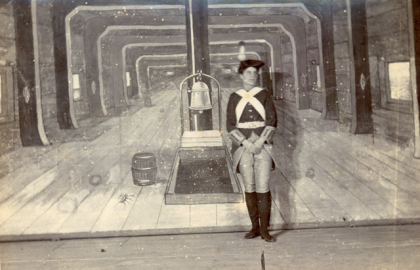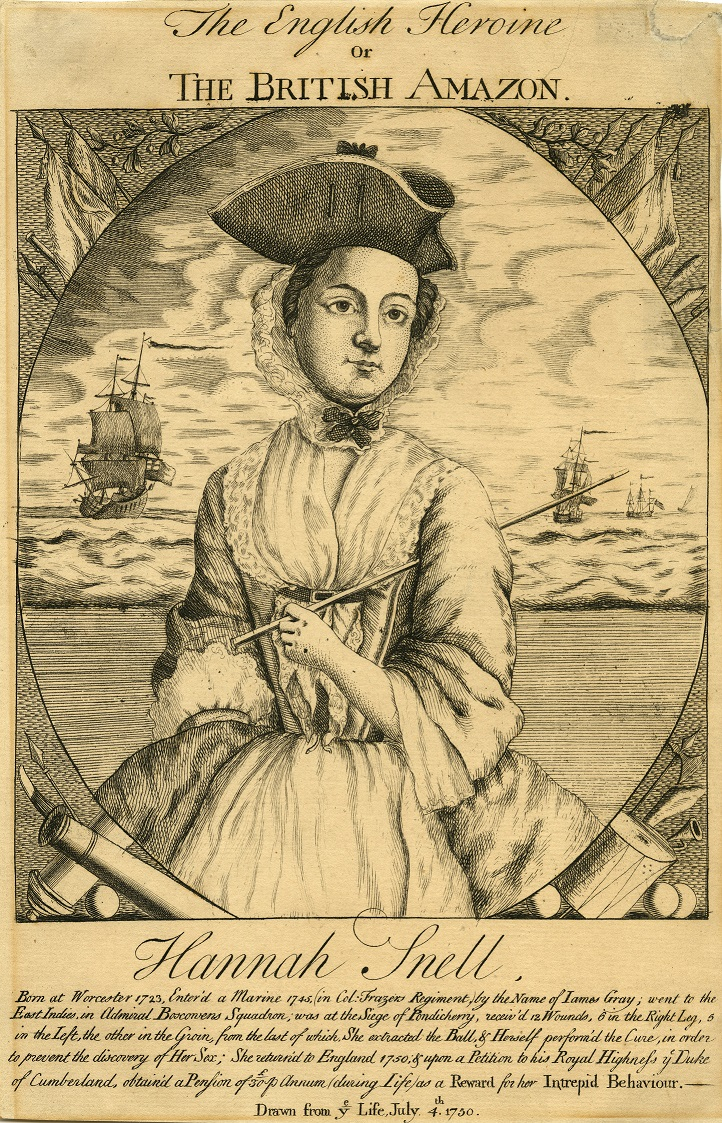Pride Month 2023 - Should we assign meaning to 'hidden' identities?
- View news filtered by: 21st Century
- View news filtered by: Naval Lives
- View news filtered by: Communities
- View news filtered by: Trailblazers
- View news filtered by type: Blog

To commemorate Pride Month the National Museum of the Royal Navy has produced a short series of blogs detailing the long and complicated history of LGBTQ+ service people and the Royal Navy. It is important to be open to discussion regarding this difficult history and recognise the struggles, discrimination, and in some instances danger to life, faced until relatively recently. This is also the time to celebrate on the progress made in LGBTQ+ rights and reflect on the steps it has taken here.
The third and final entry into the series details the lives and experiences of a handful of women known to have concealed their gender-identity and served within the Royal Navy, who they were, and what is meant by ‘Queering history’.
The Female Warrior: Cross-Dressing Naval Women
The Royal Navy’s queer history spans more than five centuries but how do institutions queer the past? It is problematic assigning modern terms to people we cannot ask, and for who our modern vocabulary would not have existed. Queering history is not about definitive labels but rather showing audiences that living outside of expected sexuality or gender norms (i.e. heterosexual, male or female) is not a twenty-first century phenomenon; people have lived beyond the binary for centuries.
Today there is greater understanding of the need for healthy and helpful representations of sexuality and gender identity in popular culture, with the 2018 period drama, Gentleman Jack, that filmed several scenes at NMRN’s Hartlepool site, aired its ground-breaking finale featuring a same-sex wedding “ceremony”, with more but these cross-dressing seafarers did not have the luxury of representation.
They had no choice but to forge the way themselves. It is incorrect to assume that these women, without doubt, were exploring their gender or sexuality at the time, though some were certainly intimate with other women. But they are representative of a way of life that absolutely offered some women who loved other women, or who did not relate to their female body a chance to live a life more true to who they were.
For them there was no Sarah Waters, no RuPaul; there was just chance, circumstance, and perhaps a brief scandal in the local papers that suggested somewhere were other women like them.
About the National Museum of the Royal Navy: The National Museum of the Royal Navy have an LGBTQ+ staff network in place, helping to transform the experiences of LGBTQ+ people at work. We provide a space for LGBTQ+ staff and allies to support each other, express concerns they may have, and spend time around people who understand their experiences. The LGBTQ+ staff network feeds into our Equity, Diversity and Inclusion action group ensuring LGBTQ+ staff voices are heard and are considered when developing new policies, processes and initiatives - helping us to become more inclusive.
Glossary
LGBTQ+: Lesbian, gay, bisexual, trans+, queer – the ‘+’ is symbolic of the many other sexualities and gender identities that a person may identify as such as agender, asexual, pansexual, demisexual, non-binary etc.
Queer: An umbrella term frequently used by the LGBTQ+ community to discuss sexuality and/or gender identities. The term was once used as a discriminatory term though has been largely reclaimed by the LGBTQ+ community and is an accepted academic term. Some people, however, still find the term offensive.
Binary: In terms of people, the classification of gender into two distinct, opposite forms – masculine and feminine. People who do not identify with these terms may use words such as “non-binary”.
Beyond the binary : The recognition and embracing of all other possible gender identity, expression, and experience.
Queering history: It is not always possible to find solid evidence of queer history, due to people historically hiding their sexuality or gender identity. Queering history is the practice of finding evidence of self-expression outside of the societal norms of the time. These may not have been an explicit demonstration of sexuality or gender identity but could be interpreted as such.
Gender norms: Refers to how people of a particular gender are expected to behave in a given social context. Harmful gender norms/roles result in inequality for people whether they identify as male, female or another form of gender expression.
